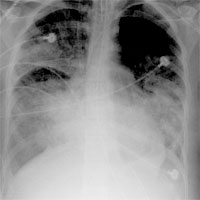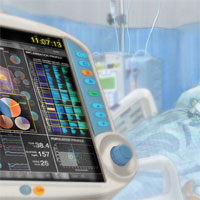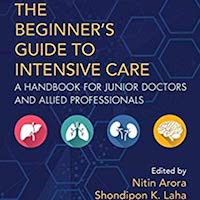Tag: ARDS

Extravascular Lung Water as a Target for Intensive Care
Extravascular lung water (EVLW) remains a useful guide for monitoring pulmonary edema (PO) and vascular permeability in sepsis, acute respiratory distress syndrome (ARDS), and heart failure. In addition, EVLW has a prognostic... read more

Effect of Titrating PEEP with Esophageal Pressure-Guided Strategy vs Empirical High PEEP-Fio2 Strategy on Death and Days Free From Mechanical Ventilation Among Patients With ARDS
Among patients with moderate to severe Acute Respiratory Distress Syndrome (ARDS), PES-guided positive end-expiratory pressure (PEEP), compared with empirical high PEEP-Fio2, resulted in no significant difference in death... read more

ECMO in the Critical Trauma Patient
Growing evidence suggests the potential use of Extracorporeal membrane oxygenation (ECMO) for the treatment of refractory respiratory failure in adults, but the clinical benefit in polytraumatic patients is not clear. The... read more

Clinics Aim to Improve Post-ICU Recovery
Ten days after arriving in the emergency department with pneumonia, 58-year-old Connie Bovier woke up in the intensive care unit (ICU). She survived acute respiratory distress syndrome (ARDS), sepsis, and a host of other... read more

RBC Transfusions Are Associated With Prolonged Mechanical Ventilation in Pediatric ARDS
RBC transfusion was independently associated with longer duration of mechanical ventilation in pediatric acute respiratory distress syndrome. Hemoglobin transfusion thresholds should be tested specifically within pediatric... read more

The Clinical Impacts and Risk Factors for Non-central Line-associated Bloodstream Infection in 5046 ICU Patients
Most of the previous studies focused on central line-associated bloodstream infection (CLABSI), while non-central line-associated bloodstream infection (N-CLABSI) was poorly studied. This study was performed to investigate... read more

Fluid Management in Acute Respiratory Distress Syndrome
In this video, Dr. Stacey Valentine discusses fluid management in acute respiratory distress syndrome (ARDS), including the evidence supporting fluid-restrictive strategies. Both acute lung injury and its more severe form,... read more

The Beginner’s Guide to Intensive Care: A Handbook for Junior Doctors and Allied Professionals
Ideal for any medic or health professional embarking upon an intensive care rotation or specialism, this simple bedside handbook provides handy, pragmatic guidance to the day-to-day fundamentals of working in an intensive... read more

High-frequency Oscillatory Ventilation: Still a Role?
In light of emerging data from clinical trials, the place of high-frequency oscillatory ventilation (HFOV) in the management of acute respiratory distress syndrome (ARDS) is uncertain. Although not first-line, HFOV remains... read more

Outcomes of Patients Presenting with Mild ARDS
Hospital mortality in acute respiratory distress syndrome (ARDS) is approximately 40%, but mortality and trajectory in "mild" acute respiratory distress syndrome (classified only since 2012) are unknown, and many cases are... read more

Are “Sniffer” Systems Effective in Detecting ARDS?
Acute respiratory distress syndrome (ARDS) results in substantial mortality but remains underdiagnosed in clinical practice. For this reason, automated "sniffer" systems that analyse electronic records have been developed... read more

The Benefit of Lung-Protective Ventilation in the ED
Intubation and mechanical ventilation are commonly performed ED interventions and although patients optimally go to an ICU level of care afterwards, many of them remain in the ED for prolonged periods of time. It is widely... read more

Prospective Assessment of the Feasibility of a Trial of Low Tidal Volume Ventilation for Patients with Acute Respiratory Failure
Use of initial tidal volumes less than 8 ml/kg PBW is common at hospitals participating in the NHLBI PETAL Network. After considering the size and budgetary requirement for a cluster-randomized trial of LTVV vs. usual care... read more

Association of Driving Pressure With Mortality Among Ventilated Patients With ARDS
Our study confirmed an association between higher driving pressure and higher mortality in mechanically ventilated patients with acute respiratory distress syndrome (ARDS). These findings suggest a possible range of driving... read more








